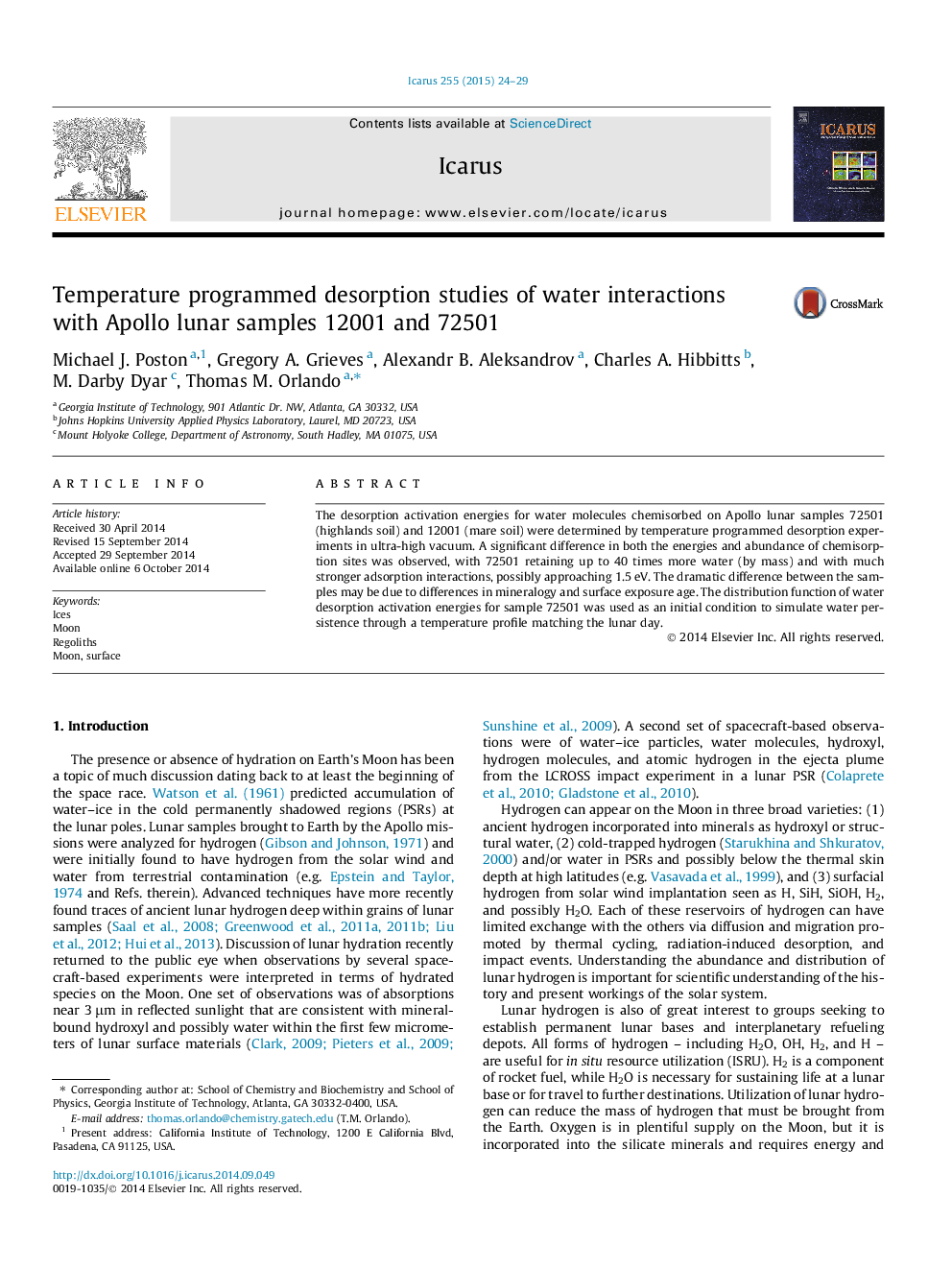| Article ID | Journal | Published Year | Pages | File Type |
|---|---|---|---|---|
| 8136142 | Icarus | 2015 | 6 Pages |
Abstract
The desorption activation energies for water molecules chemisorbed on Apollo lunar samples 72501 (highlands soil) and 12001 (mare soil) were determined by temperature programmed desorption experiments in ultra-high vacuum. A significant difference in both the energies and abundance of chemisorption sites was observed, with 72501 retaining up to 40 times more water (by mass) and with much stronger adsorption interactions, possibly approaching 1.5Â eV. The dramatic difference between the samples may be due to differences in mineralogy and surface exposure age. The distribution function of water desorption activation energies for sample 72501 was used as an initial condition to simulate water persistence through a temperature profile matching the lunar day.
Keywords
Related Topics
Physical Sciences and Engineering
Earth and Planetary Sciences
Space and Planetary Science
Authors
Michael J. Poston, Gregory A. Grieves, Alexandr B. Aleksandrov, Charles A. Hibbitts, M. Darby Dyar, Thomas M. Orlando,
